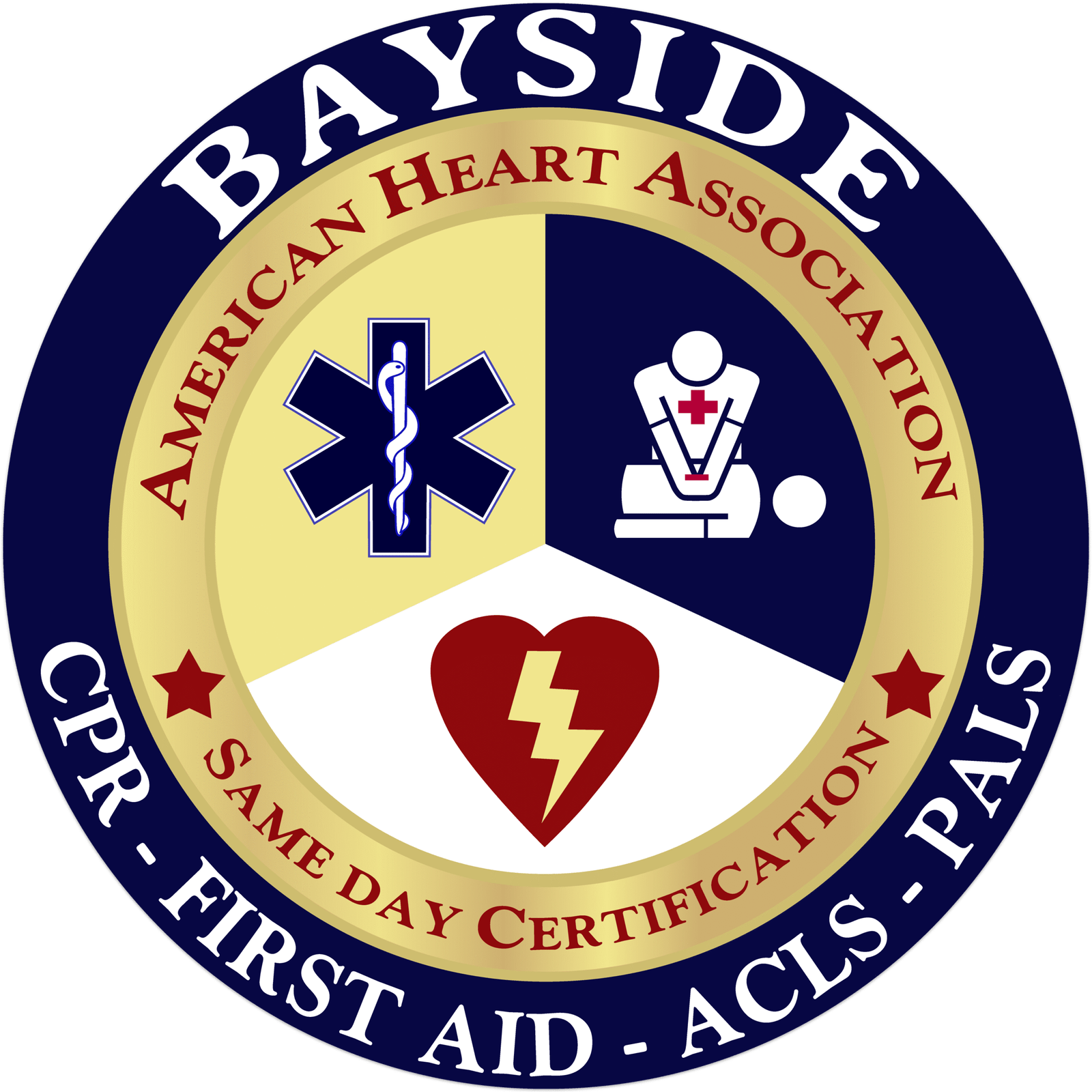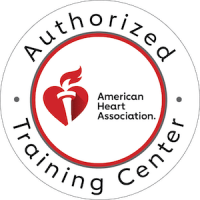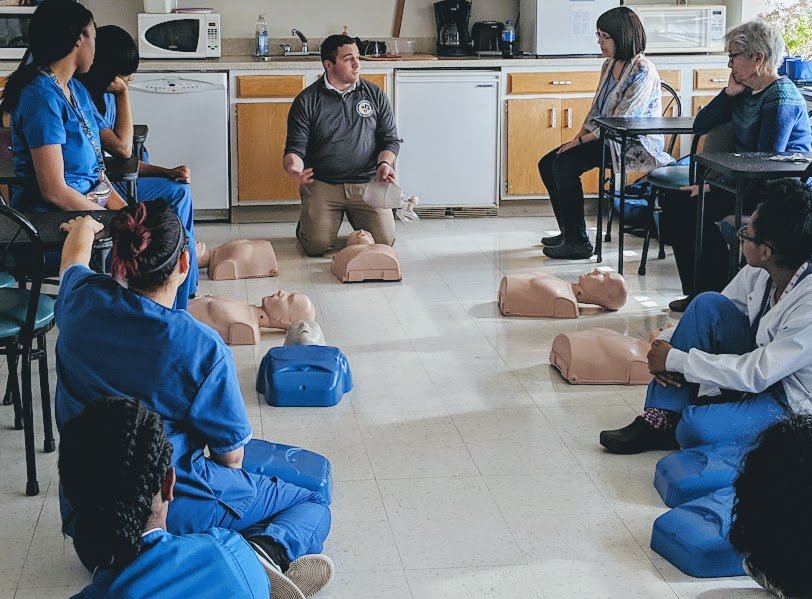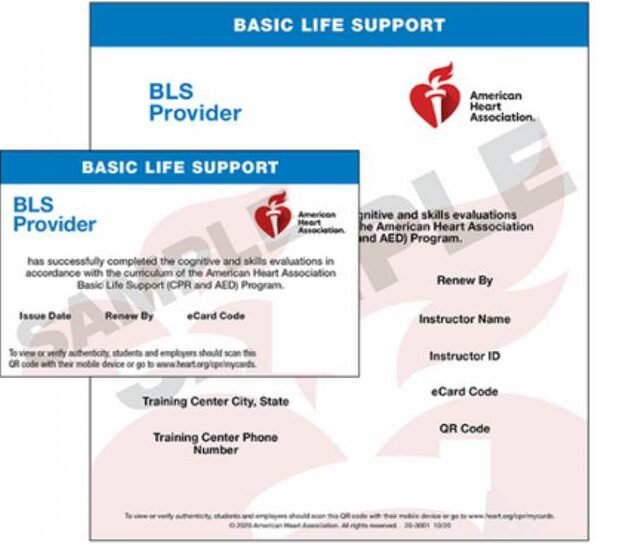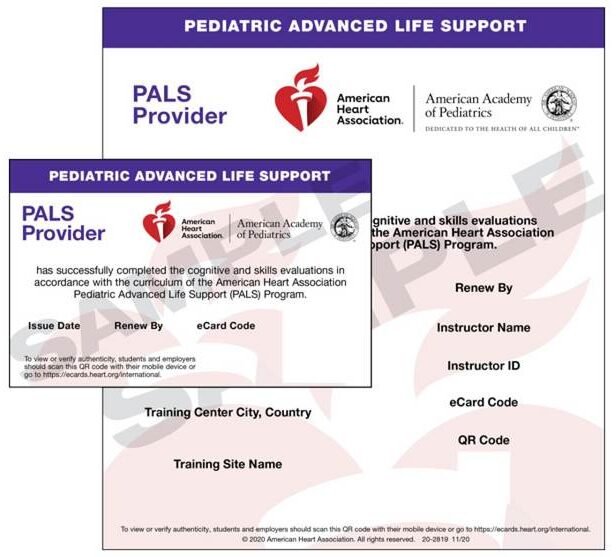Do you know what could make the biggest difference in a workplace emergency? It might just be one of your co-workers knowing CPR. Have you ever wondered what would happen if someone suddenly collapsed at work? Every second counts, and having trained employees nearby could mean the difference between life and death. That’s why more companies are stepping up and offering CPR training as part of their workplace safety programs. It’s not just about checking off a box; it’s about creating a culture of preparedness where employees feel confident and ready to act. CPR training empowers your team to respond quickly and effectively, turning ordinary people into potential lifesavers.
Thousands of cardiac arrest incidents occur in U.S. work environments annually. This statistic elevates the discussion beyond standard safety protocols, highlighting the urgent need to equip our teams with the knowledge to act decisively when it matters most.
Keep reading to learn how integrating CPR training for employees can boost your team’s confidence, prepare them for medical emergencies, and help you build a safer workplace.
Workplace CPR training is an Absolute Necessity
Cardiopulmonary Resuscitation (CPR) is a basic but essential emergency technique that involves chest compressions and rescue breaths. Its main goal is to keep blood flowing to the brain and other vital organs when a person’s heart or breathing stops. In these critical moments, CPR can keep someone alive until emergency medical services arrive. CPR has the power to save lives. Studies show that when CPR is given right away by someone nearby, it can double or even triple a person’s chances of surviving sudden cardiac arrest. Yet despite how important it is, many people hesitate to step in, often because they don’t feel confident or haven’t been properly trained. That’s why group CPR certification and education are so important, as they equip us with skills and confidence to take action when it matters most.
This is especially true in the workplace, where employees spend a large part of their day. By providing CPR training for employees, companies not only prepare their teams to handle medical emergencies but also create a safer, more supportive environment for everyone. It plays a vital role in saving lives and boosting overall workplace safety.
Benefits of CPR training in the workplace
CPR certification for employees goes far beyond just meeting health and safety regulations. It creates a strong safety net of preparedness that runs throughout your entire organization. The benefits of CPR training in the workplace are clear and far-reaching. Not only does it empower employees to act confidently during emergencies, but it also fosters a culture of care and teamwork.
Let’s explore the key benefits of workplace CPR training!
1. Create a Safer Workplace Environment
Providing CPR certification for employees is a key component of effective safety programs in the workplace. In the crucial minutes following a medical emergency or accident, trained individuals can deliver immediate care that sustains life until professional medical help arrives. This level of preparedness can make all the difference when seconds count.
2. Ensure Quick and Effective Emergency Response
In any medical crisis, acting fast is critical. When employees are trained in CPR, it means life-saving measures can begin immediately, improving the chances of a positive outcome. This quick response ability is one of the key reasons why many businesses prioritize on-site CPR training.
3. Empower Your Team with Life-Saving Skills
Employees trained in CPR will have the confidence to respond quickly and effectively during emergencies. This not only helps save lives but also creates a workplace culture where safety and preparedness are valued. Confident, well-trained staff are more likely to take initiative in critical situations.
4. Strengthen Teamwork
Group CPR training in the workplace isn’t just about learning a vital skill; it’s also a great team-building opportunity. These sessions encourage communication, cooperation, and trust among co-workers, helping to build stronger team bonds. Sharing the experience of mastering life-saving techniques can boost morale and foster a culture of mutual support. With this, the team feels more prepared to face emergencies, supporting both physical and psychological safety at work.
5. Improves Employee Retention and Job Satisfaction
Offering CPR training as part of employee development programs shows genuine care, which can increase job satisfaction and loyalty. It shows that the organization invests not only in skills for the job but also in personal growth and well-being. His sense of being cared for fosters stronger emotional connections to the workplace, helping reduce turnover and building a more committed, motivated team.
Guide to Implement Workplace CPR Training
Implementing CPR training within your organization doesn’t have to be overwhelming. With the right approach, it can be a smooth, structured process that brings lasting value to your workplace. Whether you’re a small business or a large corporation, integrating CPR training equips your team with the skills to respond confidently in critical moments, essential to save lives. Here is a clear guide to help you implement CPR training in the workplace:
1. Assess Specific Workplace Needs
Begin by conducting a thorough assessment of your team size, work environment, and any specific risks in your environment. The needs of an office will be different from those of a factory or field team. Decide who should be trained: should all employees receive certification, or will you focus on designated key responders within each department or shift? A precise understanding of these details will help you choose the right CPR training approach for your workplace.
2. Select the right program and provider
Choose a reputable and recognized organization for your training needs, such as the AHA and ARC. Ensure their program encompasses not only CPR but also Automated External Defibrillator (AED) usage and fundamental first aid. Evaluate various course formats, including in-person sessions, hybrid models combining online and practical components, or fully online options that may be followed by in-person skill verification, to best suit your organizational structure and employee availability.
3. Schedule Training Sessions Effectively
Optimize participation by scheduling training during regular work hours or during periods of reduced operational activity. For larger teams or those operating on multiple shifts, implement a rotating schedule to ensure all employees receive training without significant disruption to workflow.
4. Promote Training Internally
Raise awareness about the importance of CPR training to your employees. Utilize internal communication channels such as email announcements, prominent posters in common areas, and discussions during team meetings. Emphasize that these are crucial, practical skills applicable not only in the workplace but also in personal life, fostering a sense of value and relevance.
5. Track Certification and Recertification
Establish a robust system for tracking employee CPR certification status, including completion dates and expiration. Since most CPR certifications last about two years, it’s important to plan recertification sessions ahead of time. Keeping accurate records helps make sure your team stays prepared and meets all safety requirements.
6. Integrate CPR into Emergency Protocols
Once training is complete, incorporate the roles and responsibilities of CPR-trained staff into your existing workplace emergency procedures. You need to document and share these protocols, detailing who is assigned what role in an emergency. Consider the strategic placement of AEDs in visible and accessible areas, particularly in larger or higher-risk environments, and ensure all dedicated staff are proficient in their use.
7. Encourage Regular Practice
CPR skills can fade if not used often. This can include brief practical drills during safety meetings, access to online training modules, or the utilization of simulation apps. Staying consistent with practice helps ensure your team is always ready to respond in an emergency.
Final Thoughts: Safer Workplace with CPR Training
Providing CPR training as part of workplace safety training programs isn’t just about meeting safety requirements; it’s a meaningful investment in your team’s security and confidence. It shows employees that their well-being is a top priority. At Bayside CPR, we make it easy to earn essential certifications like ACLS, BLS, PALS, and CPR & First Aid. Our hands-on, practical courses are designed to equip you with the vital skills you need to handle emergencies with confidence. Whether you’re looking to move forward in your career or just want to be prepared to help others, we’re here to guide and support you every step of the way. Elevate your professional journey with our comprehensive training programs!
